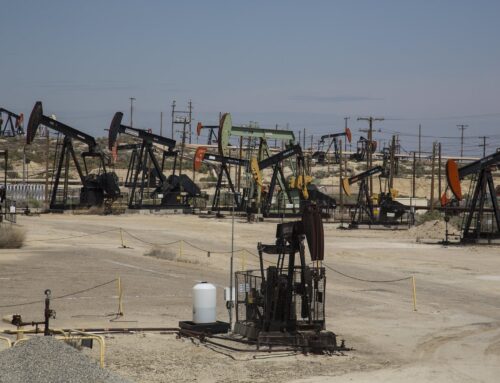As a loyal Weekly Wastebasket reader, you know we have a knack for uncovering important developments that often go unnoticed by the public. We pride ourselves on being able to provide insider knowledge that goes beyond the headlines, giving you the kind of information that will impress at all the cocktail parties. The hidden gems that can have significant implications for government spending and, ultimately, impact people’s lives.
This week we are going to nerd-out on disaster data. Last year, TCS supported the Community Disaster Resilience Zones Act of 2022, which requires the Federal Emergency Management Agency (FEMA) to regularly update datasets that define natural hazard risk factors to designate communities most at risk to natural hazards like hurricanes, flooding, earthquakes, and wildfires as community disaster resilience zones (CRDZ—the cool kids pronounce it “cedars”). This week, we submitted comments to FEMA on implementation of that legislation.
As you know, we talk a lot about federal spending that is a waste of money and creates costs for taxpayers down the road. The inverse of this is smart spending that reduces future costs for taxpayers. To wit: studies have consistently shown that every dollar spent on disaster mitigation saves several dollars in disaster recovery and rebuilding costs. According to the National Institute of Building Sciences, mitigating in advance of disasters will save taxpayers up to $13 for every $1 invested. So, investing in mitigation is not only a matter of safety but also a smart fiscal decision.
This summer, FEMA issued a notice and request for information to seek public input on the implementation of the Community Disaster Resilience Zones Act of 2022, including updates to the methodology and data used for the National Risk Index (NRI) in identifying these community resilience zones. The NRI is a dataset and online tool that uses available data for natural hazard and community risk factors to help calculate information on expected annual losses, social vulnerability, and community resilience for 18 natural hazards. (It’s actually a pretty cool tool.)
However, the NRI currently does not incorporate future conditions or anticipated impacts related to climate change; it provides a snapshot of natural hazard risk in the United States based on historic data and information. As natural hazards, the built environment, and land use change over time, the NRI needs to be updated to anticipate future conditions. To do this, it needs to incorporate factors such as the increasing frequency, exposure, intensity, and duration of natural hazards, as well as changes in the building stock, population demographics, and crop and livestock data.
The goal of CDRZs is to channel public and private sector investments towards enhancing infrastructure resilience, particularly in communities that are most vulnerable and at high risk of natural disasters. These designated zones will benefit from targeted federal support, such as increased federal cost-share for the Building Resilient Infrastructure and Communities program, and—ideally—enable better coordination between FEMA, the federal government, and the private sector.
The Community Disaster Resilience Zones Act of 2022 requires CRDZs include the 50 census tracts with the highest individual hazard risk ratings nationwide, at least one percent of high-risk census tracts in each state, and that the zones be geographically balanced. FEMA then has the discretion to provide financial and technical assistance to state, local, tribal, and territorial governments involved in planning and implementing resilience or mitigation projects within the designated resilience zones.
A real key here is that these designated communities see this as a blessing—better access to assistance and funding—than as a curse—a community that is at risk and needs that funding. The program is about setting priorities—where are the higher risks, which communities have difficulty accessing resources—and helping the communities reduce their risk, which will also reduce future costs. And doing it at the community, rather than the property, level also has greater benefits.
There is widespread agreement across the political spectrum that the federal government has a role to play in recovering from disasters, natural or otherwise. Doing it proactively, and not just reactively, will cost less in the long-run, and it will probably save lives. Sharpening the tools we use to identify and designate the areas most in need of these kinds of targeted mitigation investments is just common sense.










